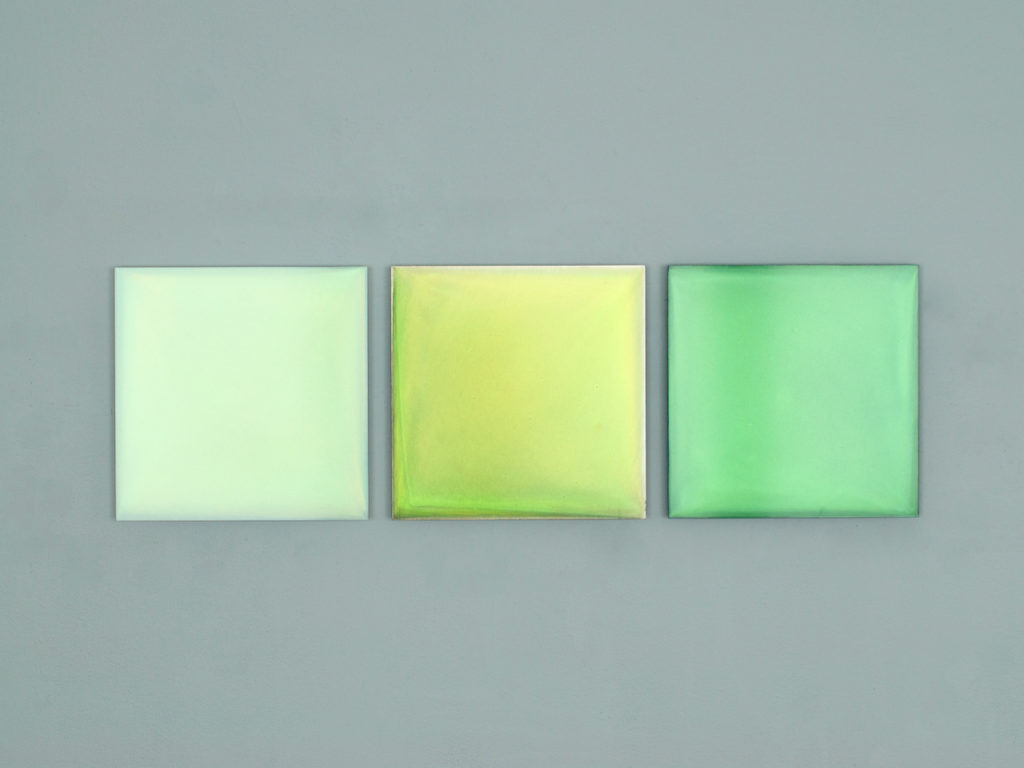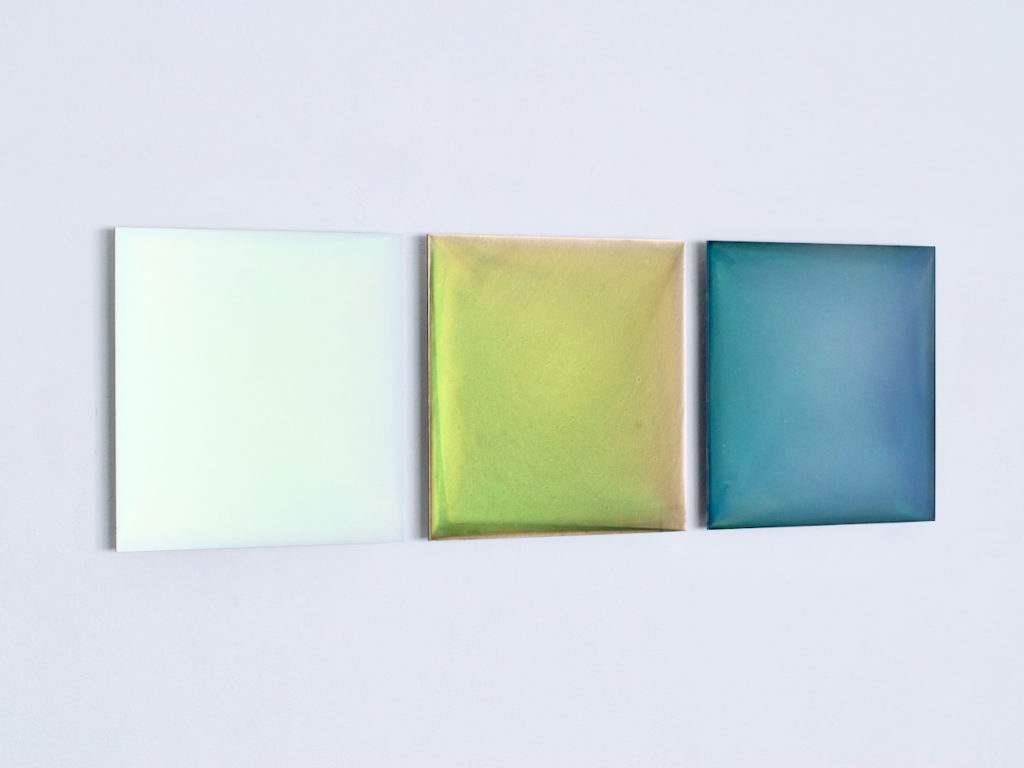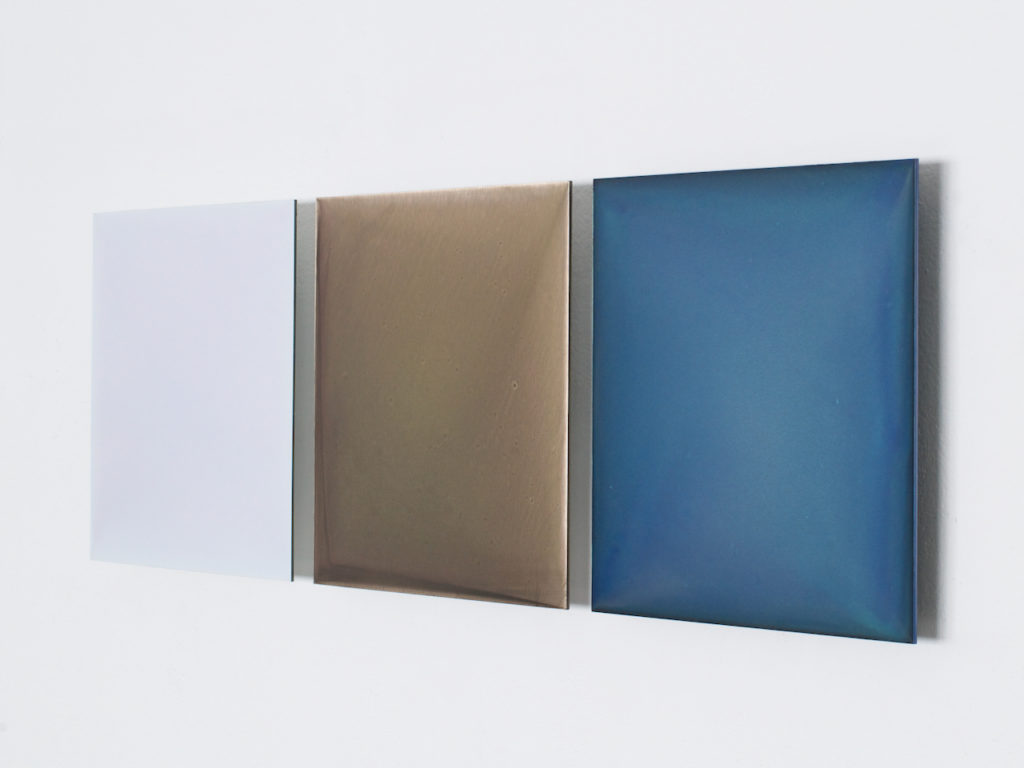Can Color Change by Itself?
Report about rosa m hessling's works
Han Yan
In the exhibition Mostly Monochrome (January 23 – March 14, 2015) in the Munich Gallery Renate Bender, a three-part work hangs in the main room (img.1: Grünkraft). The work’s color changes from green to blue depending on the viewer's position. The artist rosa m. hessling (*1954) created this magical work.
The works surprise the viewer because the position and lighting conditions can significantly change the picture’s appearance and color. How is this possible? Can color change on its own? The mystical process depends on the specific pigments, including interference pigments. Their properties include parallel light refractions/wave superimpositions that make specific colors of the spectrum visible. The slightest fluctuations in the sunlight hitting the image’s surface or minimal changes in the viewing position allow color variation to be perceived.
How are these images created? In a repetitive process, the artist lets the pigments, which she specially mixed and bound in lacquer, flow onto the flat surface. The paint is "painted" through this constant movement until the color mixture sets and forms the basis for the perceptible color changes.
rosa m. hessling's works trigger an entirely new color experience. Viewers must independently decide how and from which angle they encounter the pictures. Only with this unique experience can everyone discover their own colors in hessling's work.



